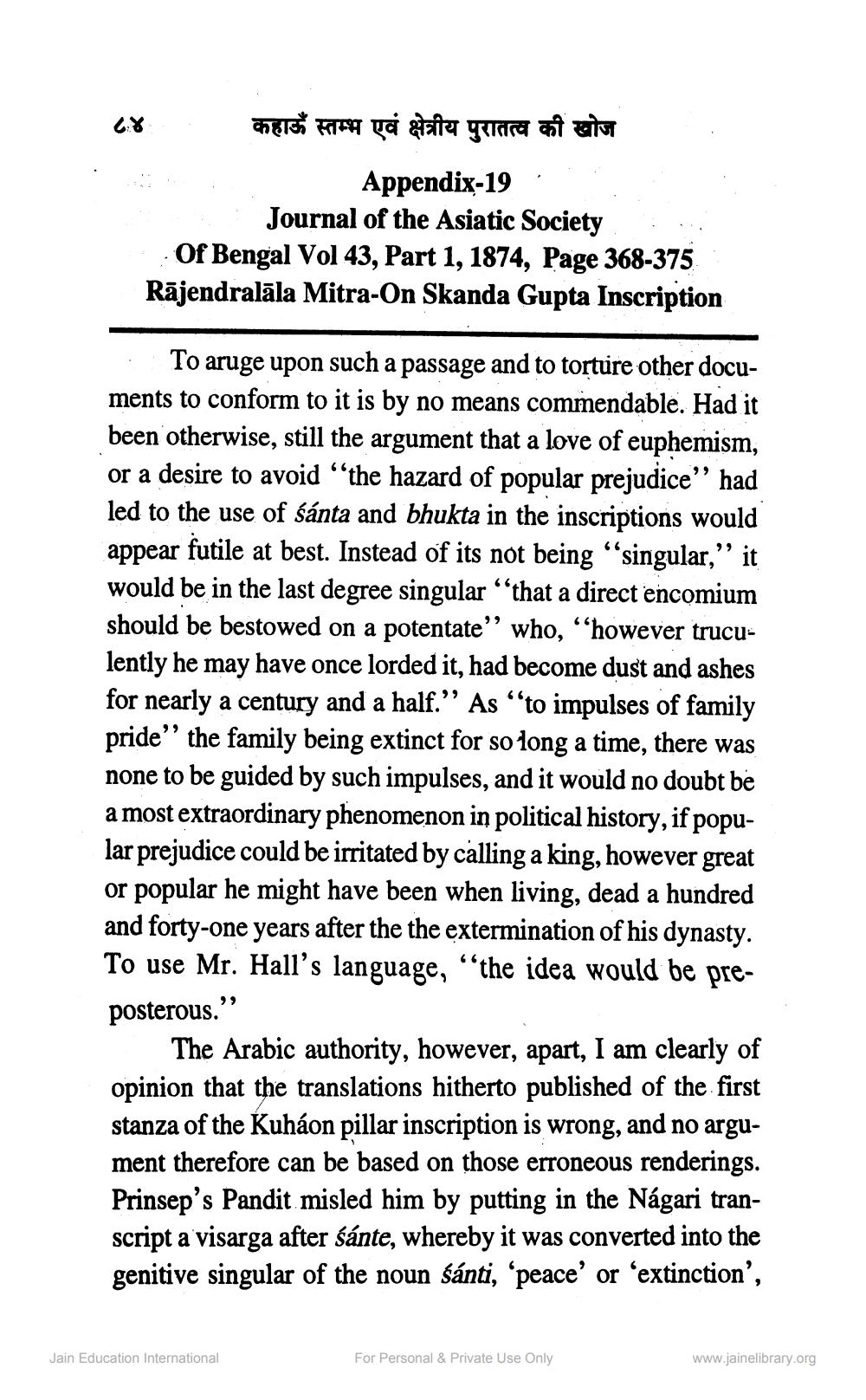________________
८४ कहाऊँ स्तम्भ एवं क्षेत्रीय पुरातत्व की खोज
Appendix-19. Journal of the Asiatic Society Of Bengal Vol 43, Part 1, 1874, Page 368-375 Rājendralāla Mitra-On Skanda Gupta Inscription
To aruge upon such a passage and to torture other documents to conform to it is by no means commendable. Had it been otherwise, still the argument that a love of euphemism, or a desire to avoid the hazard of popular prejudice'' had led to the use of sánta and bhukta in the inscriptions would appear futile at best. Instead of its not being "singular,” it would be in the last degree singular ''that a direct encomium should be bestowed on a potentate” who, however truculently he may have once lorded it, had become dust and ashes for nearly a century and a half.” As ''to impulses of family pride" the family being extinct for so long a time, there was none to be guided by such impulses, and it would no doubt be a most extraordinary phenomenon in political history, if popular prejudice could be irritated by calling a king, however great or popular he might have been when living, dead a hundred and forty-one years after the the extermination of his dynasty. To use Mr. Hall's language, “the idea would be preposterous.”
The Arabic authority, however, apart, I am clearly of opinion that the translations hitherto published of the first stanza of the Kuháon pillar inscription is wrong, and no argument therefore can be based on those erroneous renderings. Prinsep's Pandit misled him by putting in the Nágari transcript a visarga after śánte, whereby it was converted into the genitive singular of the noun śánti, 'peace' or 'extinction',
Jain Education International
For Personal & Private Use Only
www.jainelibrary.org




